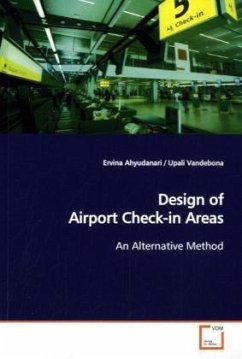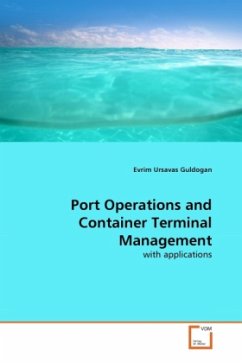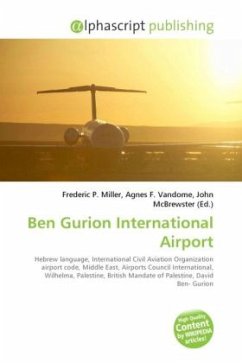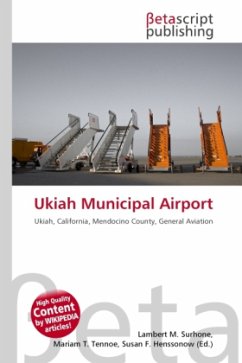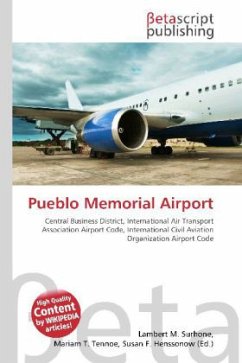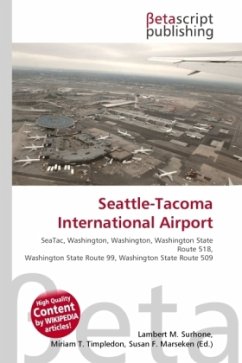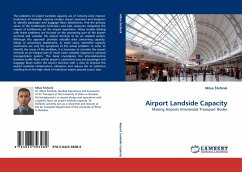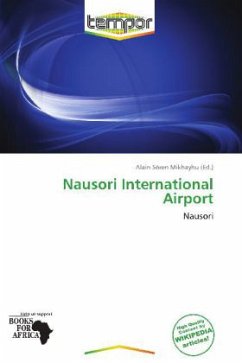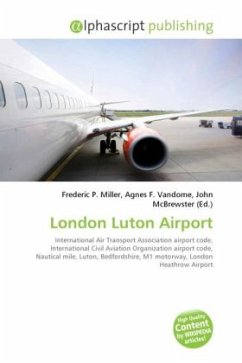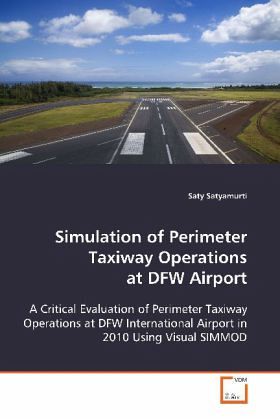
Simulation of Perimeter Taxiway Operations at DFW Airport
A Critical Evaluation of Perimeter Taxiway Operations at DFW International Airport in 2010 Using Visual SIMMOD
Versandkostenfrei!
Versandfertig in 6-10 Tagen
52,99 €
inkl. MwSt.

PAYBACK Punkte
26 °P sammeln!
The FAA and the DFW airport had proposed a Perimeter Taxiway (PT) system to improve runway safety and reduce runway incursions. The PT is analyzed utilizing actual flight data from the FAA and DFW database for 2004. An estimate was made for air traffic operations in 2010 from the FAA forecasts. Runway assignment was based on runway use plan and the standard taxiway route suggested by ATC. North and South flow was simulatedseparately in Visual SIMMOD, for a total of sixteen simulations to assess the operational procedures and constraints. Flight track data for one day in 2001, 2002, 2003, 2004,...
The FAA and the DFW airport had proposed a Perimeter
Taxiway (PT) system to improve runway safety and
reduce runway incursions. The PT is analyzed
utilizing actual flight data from the FAA and
DFW database for 2004. An estimate was made
for air traffic operations in 2010 from the FAA
forecasts. Runway assignment was based on runway use
plan and the standard taxiway route suggested by
ATC. North and South flow was simulated
separately in Visual SIMMOD, for a total of
sixteen simulations to assess the operational
procedures and constraints. Flight track data
for one day in 2001, 2002, 2003, 2004, and 2005 was
obtained to conduct a statistical analysis and
determine the height of aircraft overflying the
proposed centerline of PT during departures and
arrivals. The risk factor was computed to test the
Obstruction Free Zone criteria established by
the FAA for arrivals and departures. The VS Animator
was used tovisually track the path of each aircraft
on the airfield. The VS Reporter was used to
assemble results for runway crossing delay, taxiway
travel time, gate assignment, arrival and departure
rate per hour, and airport performance
Taxiway (PT) system to improve runway safety and
reduce runway incursions. The PT is analyzed
utilizing actual flight data from the FAA and
DFW database for 2004. An estimate was made
for air traffic operations in 2010 from the FAA
forecasts. Runway assignment was based on runway use
plan and the standard taxiway route suggested by
ATC. North and South flow was simulated
separately in Visual SIMMOD, for a total of
sixteen simulations to assess the operational
procedures and constraints. Flight track data
for one day in 2001, 2002, 2003, 2004, and 2005 was
obtained to conduct a statistical analysis and
determine the height of aircraft overflying the
proposed centerline of PT during departures and
arrivals. The risk factor was computed to test the
Obstruction Free Zone criteria established by
the FAA for arrivals and departures. The VS Animator
was used tovisually track the path of each aircraft
on the airfield. The VS Reporter was used to
assemble results for runway crossing delay, taxiway
travel time, gate assignment, arrival and departure
rate per hour, and airport performance



